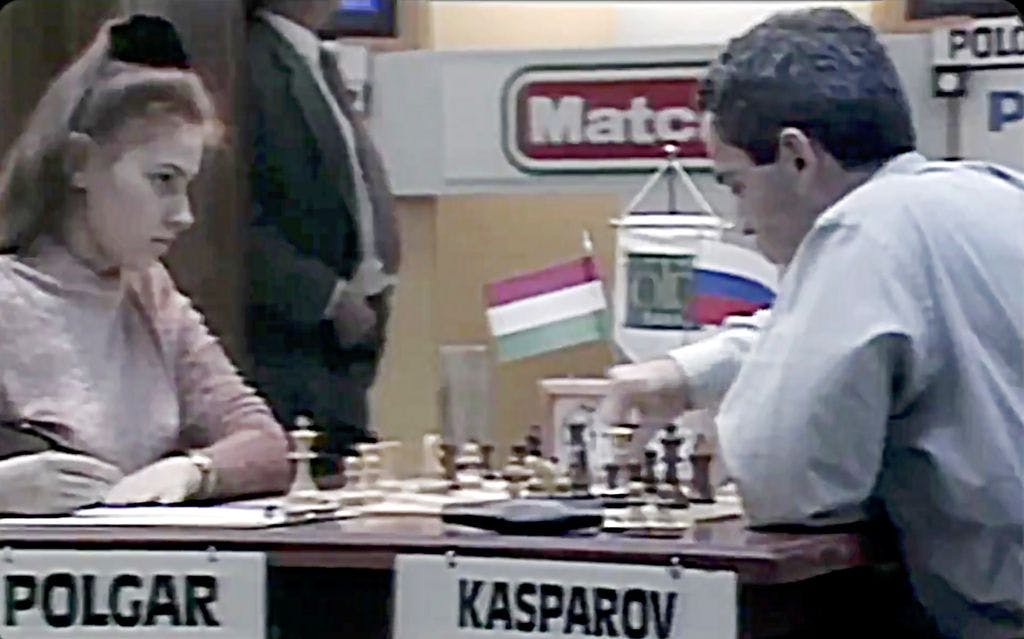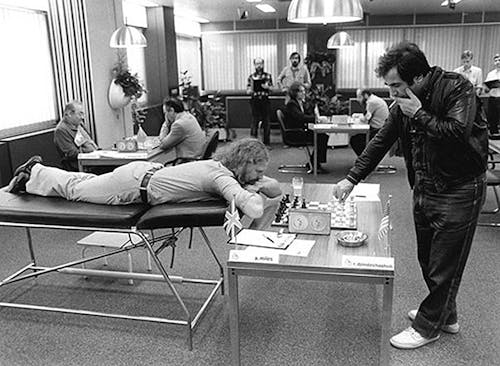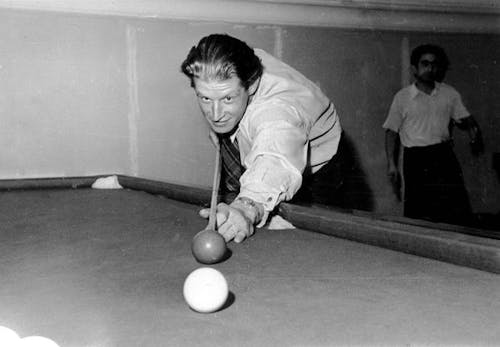Are you sure you want to delete your account?
(This will permanently delete all of your data - purchases, game scores, ratings, etc)
Change your username
Your current username is: guest
Change your account email address
Your current account email is:
Redeem your Fampay code here!
Use your Fampay code to get access to the Play Magnus Plus Membership!

The Infamous Touch-Move Rule
Before playing a friendly game of chess in a casual setting, make sure to discuss what set of rules you will be following. For instance, some people believe it is acceptable to take moves back before the opponent has replied (or even after!). The “a move counts as one only once you release the piece” rule is even more widespread in amateur games.
As you probably know, in tournament play, takebacks are not allowed, and the “touch-move” rule stands tall. That is, you have to say “J’adoube” if you wish to adjust the piece. Otherwise, you have to move it if you touch it, as long as it is legal. In blitz, Russian-speaking players often use the frivolous saying, “If you touch, you have to marry!”, to remind the opponent about the touch-move rule.
Even though these rules are well-known to any serious tournament player, the temptation to break them is too large, especially when there is a lot at stake! Let’s recall a few such accidents.
In 1961, GM Eduard Gufeld played 15…Qa5? in a decisive game of the Netherlands-USSR student match against Alexander Jongsma, allowing a well-known Nd5 trick with a discovered attack. According to GM Genna Sosonko’s memoirs, when one of Alexander’s peers decided to find him in the playing hall and inform the lucky guy about such a “present”, Alexander returned to the board only to allocate the queen on b6! Twenty years later, Gufeld confessed to his opponent that he had indeed played Qa5 in that game before taking a move back…
One of the most famous touch-move controversies transpired in the Judit Polgar vs. Garry Kasparov game at Linares’1994. An interesting recollection of the events is given in Judit’s “From GM to Top 10” book. There is no universal agreement on what happened there, but a widespread belief is that Garry did release the piece only to pick it up and put the knight on a different square. Judit instantly realized it and looked at the arbiter, but he either hadn’t noticed anything or, according to some theories, was on friendly terms with Kasparov and didn’t enforce the rule on him. Anyway, Polgar must have decided that it is not worth it to mess with Kasparov, who at that time could easily make sure that you would stop getting invitations to top tournaments. She didn’t protest and ended up losing the game. Interestingly enough, some reporters forgot to turn the camera on and recorded this footage, which led to a scandal! Ah, the good old days when there were no live streams…
You can challenge Judit Polgar at ages 5, 7, 9, 12, 17 (she played in Lineres’1994 at this age!) and 29 in the Play Magnus app. Judit will pretend not to notice if you touch one piece and move another, but please don’t take advantage of her generosity!
In 2003 GM Vladimir Malakhov allowed GM Zurab Azmaparaishili to take back a move after an obvious lapsus manus. Azmai said something like, “I have to trade first, of course!” and his intelligent opponent didn’t object, although he could have easily gotten a free point. As a result, Zurab won the game and the gold medal of the European Chess Championship, while Vladimir ended up being the runner-up.
In the 2009 World Blitz Championship, Magnus Carlsen blocked with the wrong rook against Alexandra Kosteniuk and, in the heat of battle, tried to amend the situation quickly. Alexandra, a seasoned chess warrior even back then, stopped the clock and gave him a “no-no” look. Carlsen left the board in disgust, not bothering to offer her a handshake. As of this day, he still hates losing but has matured and acts as a role model in terms of sportsmanship.
In the World Cup’11, David Navara assumed he had touched his king by accident in the game against Alexander Moiseenko. According to the video, he actually didn’t. Alexander decided not to call the arbiter, and Navara agreed to a draw in the game instead of checkmating his opponent. During the press conference, he explained that he didn’t want the match to be decided this way and felt guilty for accidentally touching a piece and not moving it. Both GMs went on to receive a special “Fair Play” prize.
In 2016, Garry Kasparov repeated the same knight trick, this time about Hikaru Nakamura, who took it surprisingly light-heartedly and didn’t bother calling the arbiter.
These stories are just the tip of the iceberg. Now let me share a couple of personal anecdotes about the touch-move rule.
When I was 9, I played in a championship for kids in Sweden. My opponent quickly lost the game but then declared that it was “unofficial” and suggested we play “the real one”. I didn’t speak Swedish, so it was hard for me to explain to the arbiter what had happened. I recall myself crying because of such unfairness, losing the second game to that little cheater and performing way below expectations in the entire tournament. I wonder how my opponent’s chess career and life in general went…Maybe he is a successful lawyer now?
In 2021, I was playing the Nezhmetdinov Memorial in Kazan, Russia. I heard a heated discussion during the round, stood up from the board, and decided to check out what was happening. A middle-aged man was agitatedly complaining that his opponent, a sly-looking skinny kid, made a rook move and then took it back! As proof, the victim showed his scoresheet with the move written down. The boy, however, coolly shook his head and said that he had never touched the rook. Given the nature of the position, a rook move would be totally losing for the boy, and the move on the board would surely win. They called the arbiter, then the chief arbiter, then listened to the players sitting next to them. Still, no one has seen what happened, and it’s not like you can accept such a statement as definite proof. As a result, the chief arbiter ruled that it was a “your word vs. my word” case, and the game proceeded as if nothing had happened. The man turned red and lamented: “Don’t you have any conscience whatsoever? You know you did make that move!”. The boy remained silent and played on, pocketing a win shortly after. As you can see, even though chess is considered one of the fairest sports in the sense that the arbiters have minimal effect on the game, in some cases, their ruling can become crucial. We even joked at some point with my ex-coach that I could play in a tournament where he would be the chief arbiter and, if needed, call him up and say, “He touched this piece!”. And my coach would confirm: “Yes, I saw that as well! Make the move, please!”. There’s a grain of truth in every joke, though.
Summarizing, I believe that Caissa is a strict but fair mistress. There is no need for either foul play or unsolicited “gentlemanship”. I neither ask nor give takebacks. Do you agree? Does the touch-move make sense to you or not?
Wondering how they teach Norwegian kids not to grab pieces randomly during the game? They tell them to “sit on their hands”. You can find the lesson with the same title in the Magnus Trainer app, as well 600+ more interactive lessons and fun mini-games.

